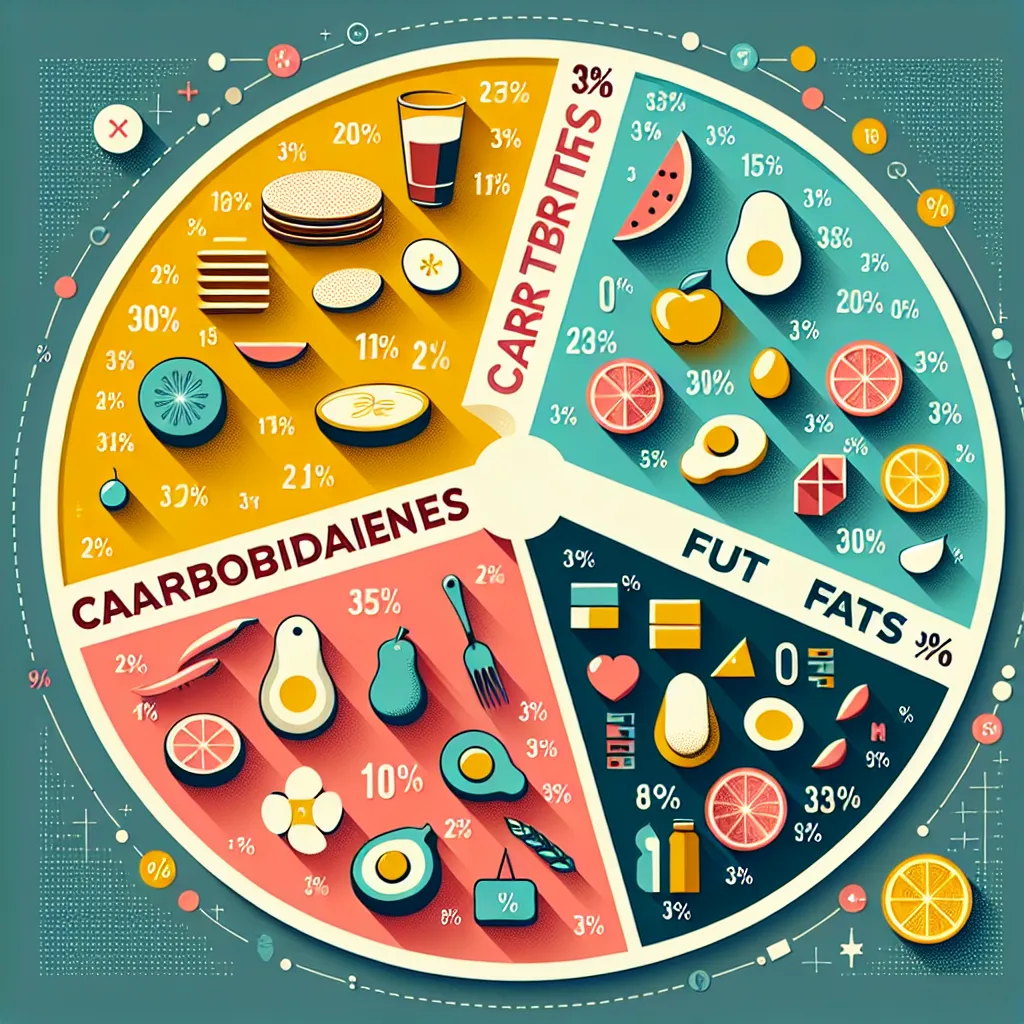Macronutrient distribution is a crucial concept in the field of nutrition and diet planning. Let’s break down this term to understand it better:
- Definition: Macronutrient distribution refers to the proportion of calories derived from each of the three main macronutrients (carbohydrates, proteins, and fats) in a person’s diet.
- Part of Speech: Noun phrase
- Pronunciation: /ˌmækrəʊnjuːtrɪənt dɪstrɪˈbjuːʃən/

Context and Usage of Macronutrient Distribution
Examples in Context
-
The athlete’s dietitian adjusted her macronutrient distribution to support her intense training regimen.
Analysis: This sentence demonstrates how macronutrient distribution is tailored to specific needs, in this case, an athlete’s requirements. -
Research suggests that the optimal macronutrient distribution for weight loss may vary among individuals.
Analysis: Here, the term is used in a scientific context, highlighting the personalized nature of nutrition. -
The ketogenic diet is characterized by a macronutrient distribution high in fats and low in carbohydrates.
Analysis: This example shows how macronutrient distribution can define specific diets or eating patterns. -
Understanding macronutrient distribution is essential for creating balanced meal plans in healthcare settings.
Analysis: This sentence emphasizes the importance of the concept in professional nutrition practice. -
Many fitness apps now allow users to track their macronutrient distribution alongside calorie intake.
Analysis: This example illustrates the practical application of the concept in modern health technology.
Common Contexts
Macronutrient distribution is frequently discussed in:
- Nutrition science and research
- Sports and athletic performance
- Weight management programs
- Medical nutrition therapy
- General health and wellness education
Frequency in IELTS
While “macronutrient distribution” itself may not be a high-frequency term in IELTS exams, the concept and related vocabulary are relevant to several IELTS topics:
- Health and Fitness (Writing Task 2, Speaking Part 3)
- Diet and Nutrition (Reading passages, Listening Section 4)
- Scientific Research (Academic Reading)
Understanding this term can enhance your ability to discuss nutrition-related topics comprehensively in the IELTS test.
Vocabulary Analysis
Word Structure
- Macro- (prefix): meaning large or significant
- Nutrient (root): a substance that provides nourishment for growth
- Distribution (root): the way in which something is shared out among a group or spread over an area
Synonyms and Antonyms
Synonyms:
-
Nutrient balance (noun)
- Definition: The proportion of different nutrients in a diet
- Pronunciation: /ˈnjuːtrɪənt ˈbæləns/
-
Dietary composition (noun phrase)
- Definition: The makeup of a diet in terms of its constituent parts
- Pronunciation: /ˈdaɪətəri ˌkɒmpəˈzɪʃən/
-
Nutritional ratio (noun phrase)
- Definition: The relationship between different nutritional components in a diet
- Pronunciation: /njuːˈtrɪʃənl ˈreɪʃɪəʊ/
Antonyms:
While there are no direct antonyms for “macronutrient distribution,” some related contrasting terms include:
-
Micronutrient focus (noun phrase)
- Definition: Emphasis on vitamins and minerals rather than macronutrients
- Pronunciation: /ˌmaɪkrəʊnjuːtrɪənt ˈfəʊkəs/
-
Calorie counting (noun phrase)
- Definition: A method of diet control focusing solely on caloric intake rather than nutrient balance
- Pronunciation: /ˈkæləri ˈkaʊntɪŋ/
Memorization Techniques
Mind Mapping
Create a mind map with “Macronutrient Distribution” at the center, branching out to:
- Types of macronutrients (carbohydrates, proteins, fats)
- Related concepts (balanced diet, nutrition planning, dietary guidelines)
- Applications (weight management, athletic performance, health maintenance)
Storytelling Technique
Imagine a story of three friends named Carby (carbohydrates), Pro (protein), and Fats, who are planning a party (your diet). They need to decide how much space (calories) each will occupy. Their distribution at the party represents your macronutrient distribution, changing based on your dietary needs and goals.
Practice Exercises
-
Writing Task: Compose a paragraph explaining the importance of macronutrient distribution in an athlete’s diet. Use at least three related terms from this lesson.
-
Speaking Practice: Describe your understanding of macronutrient distribution and how it might differ for various lifestyles or health goals.
-
Reading Comprehension: Find a scientific article on macronutrient distribution and summarize its main points, paying attention to the vocabulary used.
-
Listening Exercise: Watch a nutrition lecture or podcast discussing macronutrient distribution and note down key terms and concepts.
-
IELTS-style Question: Some people believe that counting calories is more important than considering macronutrient distribution for weight loss. To what extent do you agree or disagree? (This could be used as a Writing Task 2 practice question.)
Conclusion
Understanding macronutrient distribution is crucial for anyone interested in nutrition, health, or preparing for the IELTS exam where such topics may arise. By mastering this concept and related vocabulary, you’ll be better equipped to discuss complex nutritional ideas in both academic and everyday contexts.
Remember to practice using these terms in various situations to reinforce your learning. If you have any questions about macronutrient distribution or how to use this vocabulary in your IELTS preparation, feel free to ask in the comments section below. Keep exploring nutrition-related topics to expand your knowledge and vocabulary further!